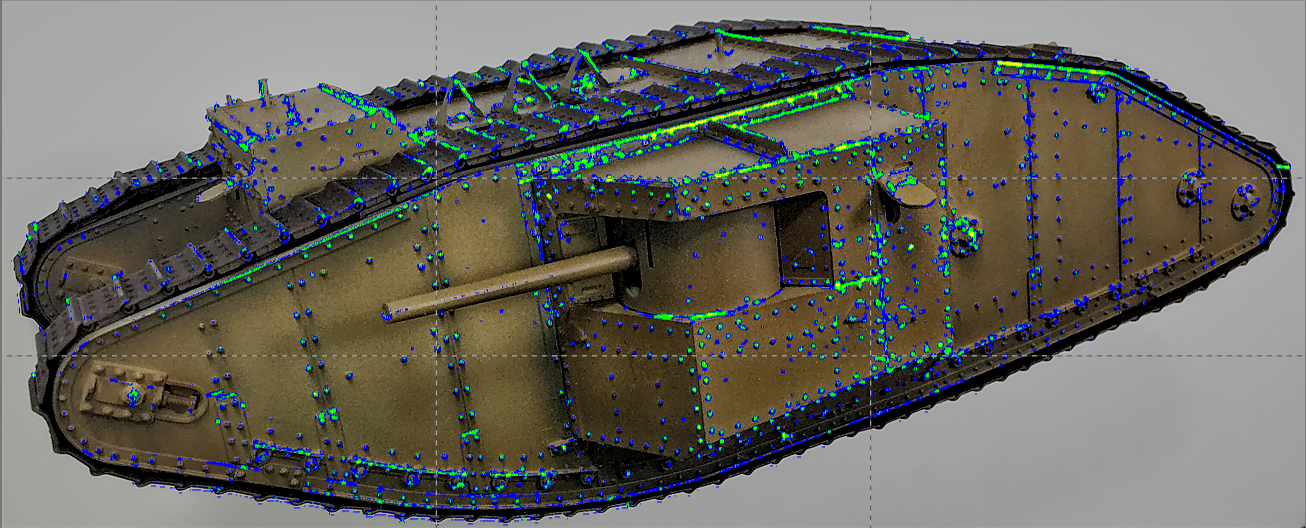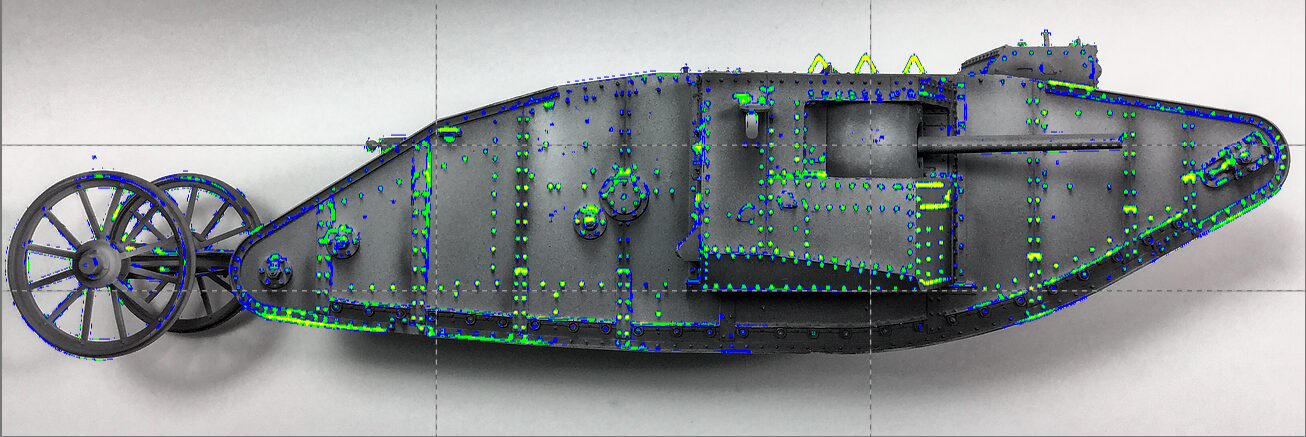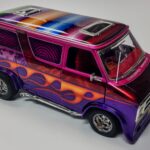Unlock Unmatched Detail and Creative Expression Using Exposure Bracketing and Clipping Control ✨
Scale model photography is a unique blend of technical precision and artistic vision. Whether you’re shooting a vintage car replica 🚗, an intricately detailed architectural model 🏛️, or a meticulously crafted miniature landscape 🌄, every minute detail counts. One of the most effective tools for ensuring those details are rendered with utmost clarity is focus peaking. This digital aid not only enhances manual focusing but also opens up creative possibilities, resulting in visually stunning images. When combined with advanced exposure techniques like exposure bracketing and careful management of clipping, scale model photographers can achieve images that are both technically precise and artistically compelling.

🔍 What Is Focus Peaking?
Focus peaking is a camera feature that highlights the edges and contours of in-focus areas by overlaying a coloured outline—often in hues of red, blue, or green—on the live view. This real-time feedback is especially useful in manual focusing, allowing photographers to visually confirm which parts of the subject are sharply rendered. In the realm of scale model photography, where even the tiniest detail makes a significant difference, focus peaking is an indispensable tool.
🎯 The Challenges of Scale Model Photography
🔬 Intricate Details Require Precise Focus
Scale models incorporate intricate textures, minuscule features, and subtle gradients that define their realism. Capturing these details demands exceptional precision:
- Limited Depth of Field: Macro and close-up photography often result in a shallow depth of field, meaning even the slightest misalignment can result in loss of detail.
- Layered Compositions: Many models are designed with multiple layers or focal planes. Manually focusing on each layer without assistance can be both time-consuming and error-prone.
- Varying Lighting Conditions: Low light or high-contrast settings further complicate the focusing process, making it challenging to maintain consistency across shots.
⚙️ Enhancing Focus with Digital Aids
Focus peaking mitigates these challenges by offering immediate visual confirmation, which not only speeds up the process but also reduces the risk of misfires. With focus peaking, photographers can quickly zero in on critical elements—ensuring that every texture, decal, or minute mechanical part is rendered in stunning clarity.
🌟 Enhancing Visual Impact Through Advanced Exposure Techniques
In addition to leveraging focus peaking, two advanced exposure techniques—exposure bracketing and clipping control—play a crucial role in capturing high-quality images of scale models.
📸 Harnessing Exposure Bracketing
📷 What Is Exposure Bracketing?
Exposure bracketing is a technique where multiple shots are taken at varying exposure settings. By capturing a series of images—one slightly underexposed, one correctly exposed, and one slightly overexposed—photographers ensure that the final composite image retains detail in both the shadows and highlights.
💡 Benefits for Scale Model Photography
Scale models often feature a wide range of tones and intricate details that can be lost in a single exposure. Exposure bracketing offers several benefits:
- Expanded Dynamic Range: By merging multiple exposures, photographers can create high dynamic range (HDR) images that reveal hidden details in both bright and dark areas.
- Preservation of Fine Details: The technique ensures that no part of the model is sacrificed due to extreme lighting conditions. Delicate textures, reflective surfaces, and subtle colour variations are all preserved.
- Creative Flexibility: Exposure bracketing provides the freedom to experiment with different lighting effects, allowing for images that are as expressive as they are detailed.
🛠️ Implementing Exposure Bracketing
Most modern cameras offer an automatic exposure bracketing mode. To implement this technique effectively:
- Enable Bracketing in Your Camera Settings: Choose the number of shots and the exposure increments based on your scene’s complexity.
- Use a Stable Setup: A tripod is highly recommended to ensure consistent framing across all exposures.
- Merge in Post-Processing: Use HDR software or manual blending techniques to combine the images, ensuring that the final output captures the full range of details in your scale model.
🚦 Understanding and Managing Clipping
❗ What Is Clipping?
Clipping occurs when the camera sensor is overwhelmed by either too much brightness (resulting in blown-out highlights) or too much darkness (leading to crushed shadows), causing a loss of detail in those areas. In the context of scale model photography, where every tiny detail is crucial, clipping can undermine the overall quality of an image.
⚠️ Impacts on Scale Model Photography
- Loss of Texture and Detail: Overexposed highlights can wash out fine textures, while underexposed shadows may hide subtle details.
- Reduced Image Depth: Clipping often results in flat, lifeless images that fail to capture the depth and dimension of the model.
- Hindered Post-Processing: Once details are clipped, they cannot be recovered in post-production, limiting creative flexibility.
🔧 Techniques to Control Clipping
To mitigate clipping and safeguard the intricate details of your scale model:
- Monitor the Histogram: Use your camera’s histogram to ensure that your exposure is balanced, with no critical areas being over or underexposed.
- Utilize Highlight Warnings: Many cameras offer clipping warnings (often called “blinkies”) that indicate areas where detail is being lost.
- Combine with Exposure Bracketing: By capturing multiple exposures, you can later blend them to compensate for clipped areas in any single shot.
- Adjust Lighting: Fine-tune your studio or natural lighting to reduce harsh contrasts that may lead to clipping, ensuring a more balanced exposure.
🌈 Enhancing Visual Impact with Combined Techniques
When focus peaking, exposure bracketing, and clipping control are used together, they create a synergistic effect that elevates scale model photography to new heights:
- Precision and Clarity: Focus peaking ensures that the subject is captured in sharp focus, while exposure bracketing preserves detail across the tonal spectrum.
- Dynamic Range and Depth: Merging bracketed exposures results in images with rich tonal gradations, capturing the full essence of the model’s design.
- Creative Storytelling: With controlled clipping, photographers can retain crucial details, allowing the final image to tell a complete visual story that highlights both the technical excellence and artistic beauty of the model.
🛠️ Practical Techniques for Integrating These Tools
📑 Setting Up Your Camera
- Enable Key Features: Begin by activating focus peaking, exposure bracketing, and clipping warnings in your camera’s menu settings.
- Customize Overlays and Warnings: Adjust the colour and sensitivity of the focus peaking overlay and clipping alerts to suit your shooting conditions.
📸 Shooting Workflow for Scale Models
- Manual Focus Adjustments: Utilize focus peaking to achieve pinpoint accuracy on critical details. Adjust the focus ring slowly and check the overlay until the desired areas are sharply rendered.
- Bracket Your Exposures: Once the focus is confirmed, engage exposure bracketing to capture a range of exposures. This ensures that both highlights and shadows are well-defined.
- Monitor Histograms: Keep a close eye on your camera’s histogram and clipping warnings during the shoot. This real-time feedback helps in making quick adjustments to lighting or exposure settings.
- Post-Processing: After the shoot, use HDR or blending software to merge the bracketed images. This process not only recovers any clipped areas but also enhances the overall dynamic range, ensuring a final image that is both vibrant and detailed.
🎉 Conclusion
Focus peaking, exposure bracketing, and careful clipping control form a trio of techniques that empower photographers to capture the intricacies of scale models with unparalleled precision. Focus peaking provides immediate, visual confirmation of in-focus areas, while exposure bracketing and HDR processing ensure that every shadow and highlight is meticulously rendered. Meanwhile, managing clipping safeguards the delicate details that make each model unique. Together, these techniques not only streamline the technical process but also elevate the artistic quality of the final image.
For photographers passionate about scale models, mastering these tools is a gateway to producing images that are as technically impeccable as they are visually captivating. Whether you are looking to highlight minute textures or create dramatic compositions with a full tonal range, integrating these advanced techniques will undoubtedly unlock new levels of creative expression and photographic excellence. 🎨📷









